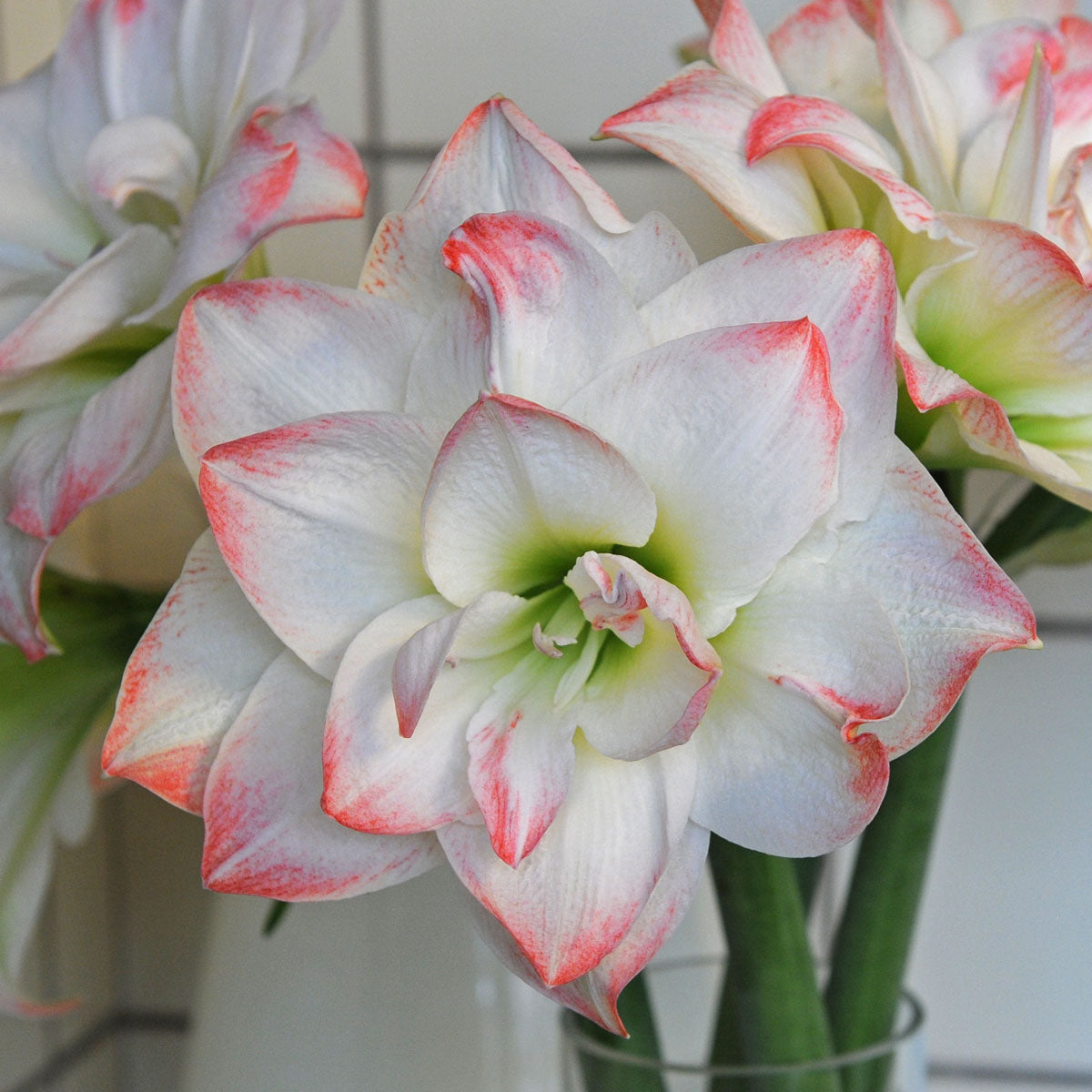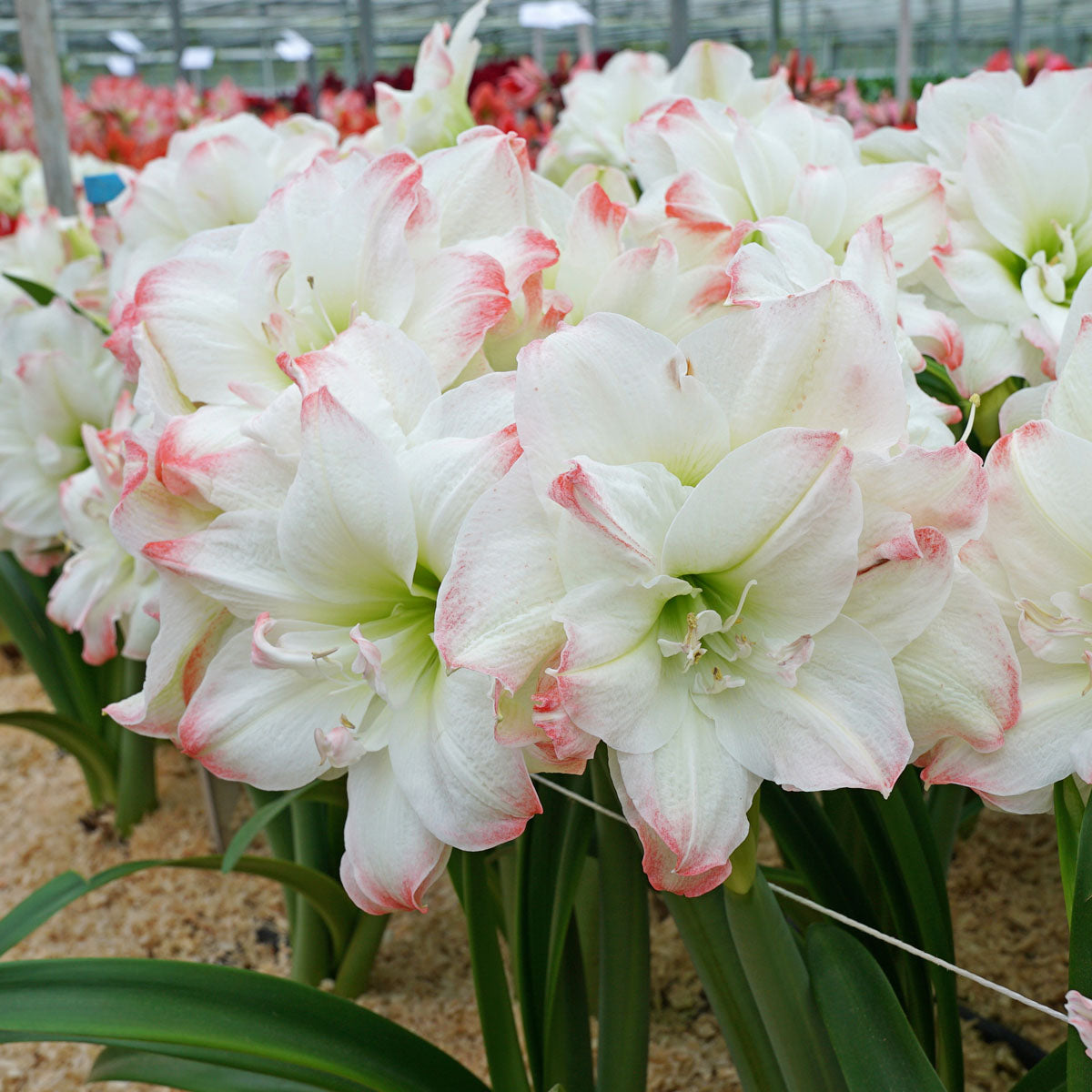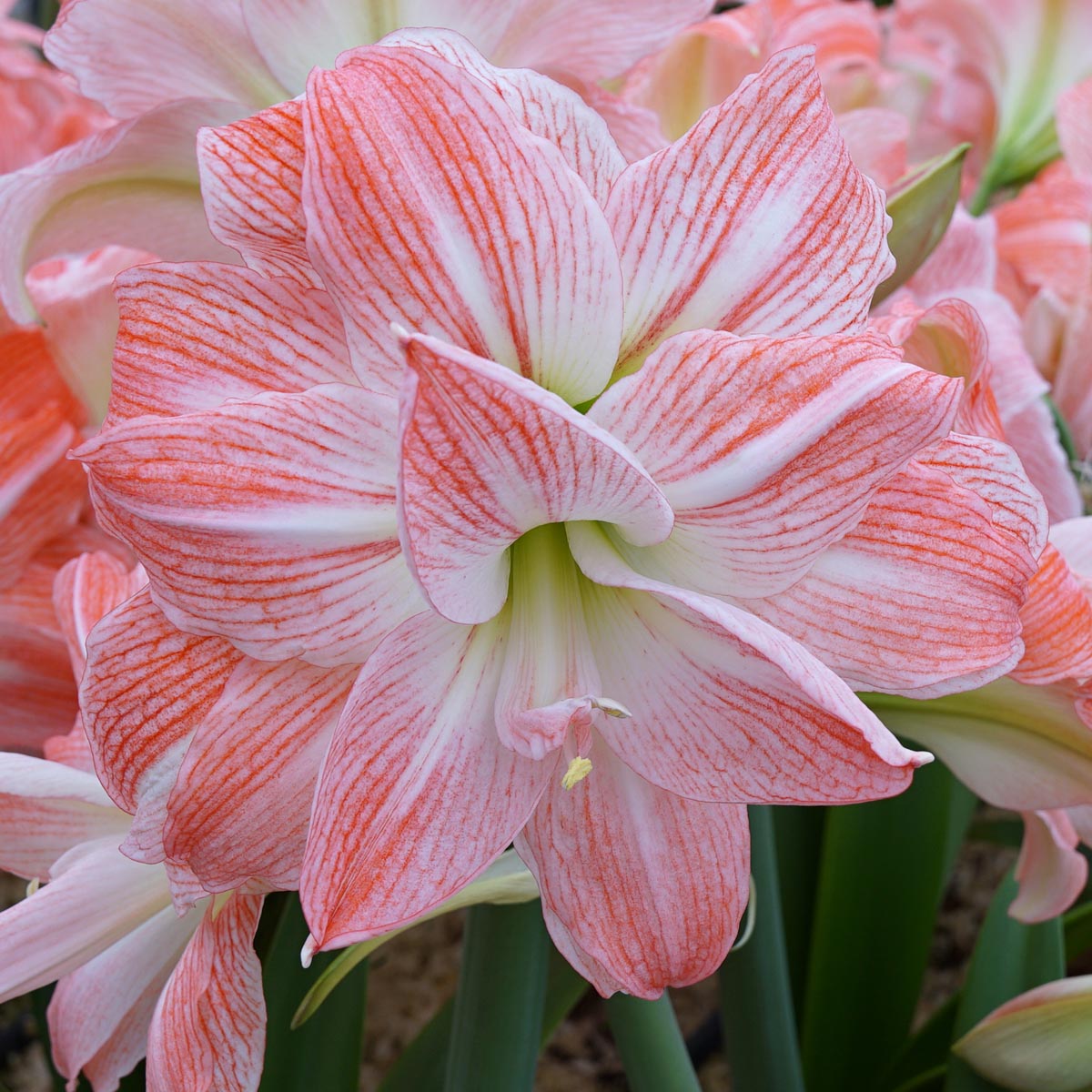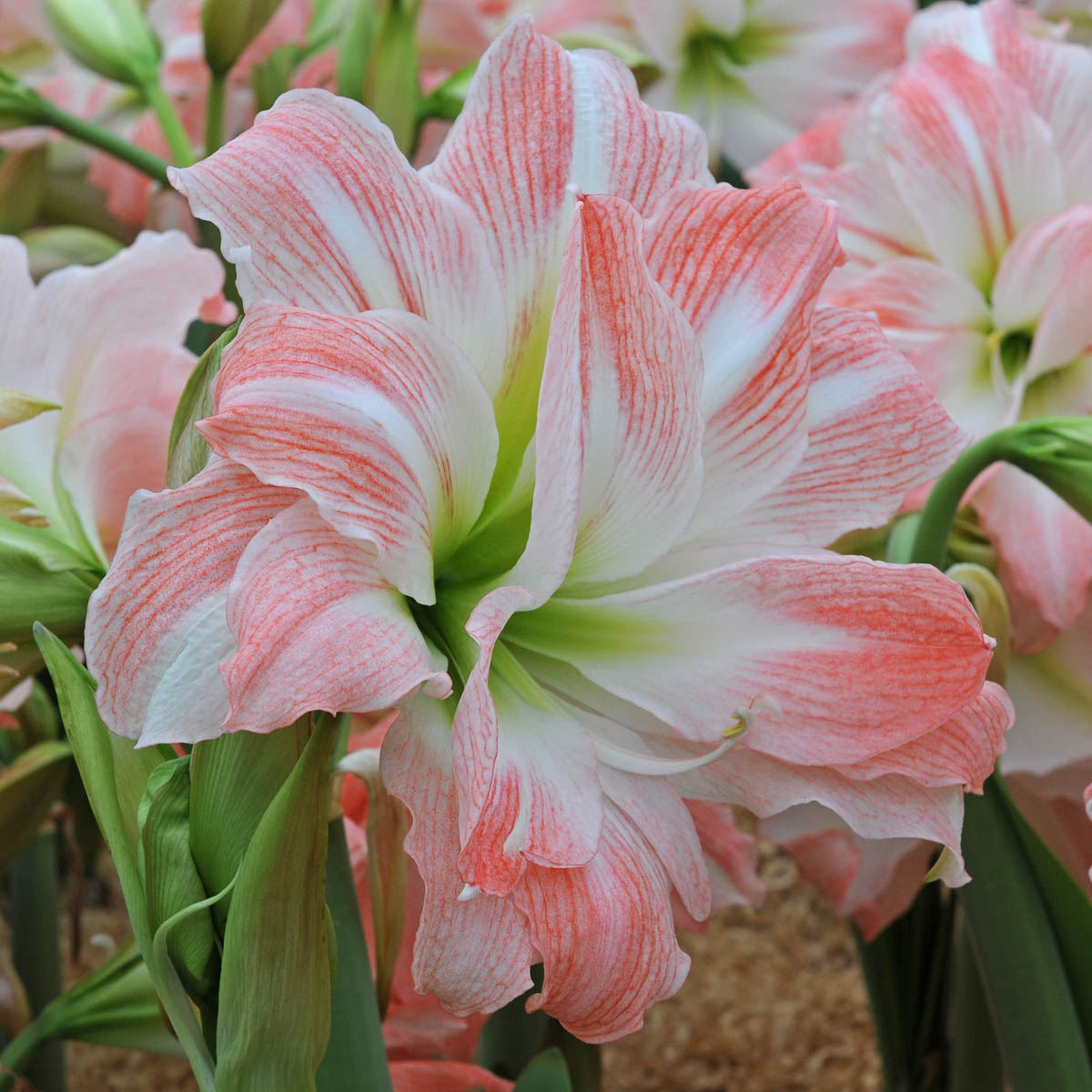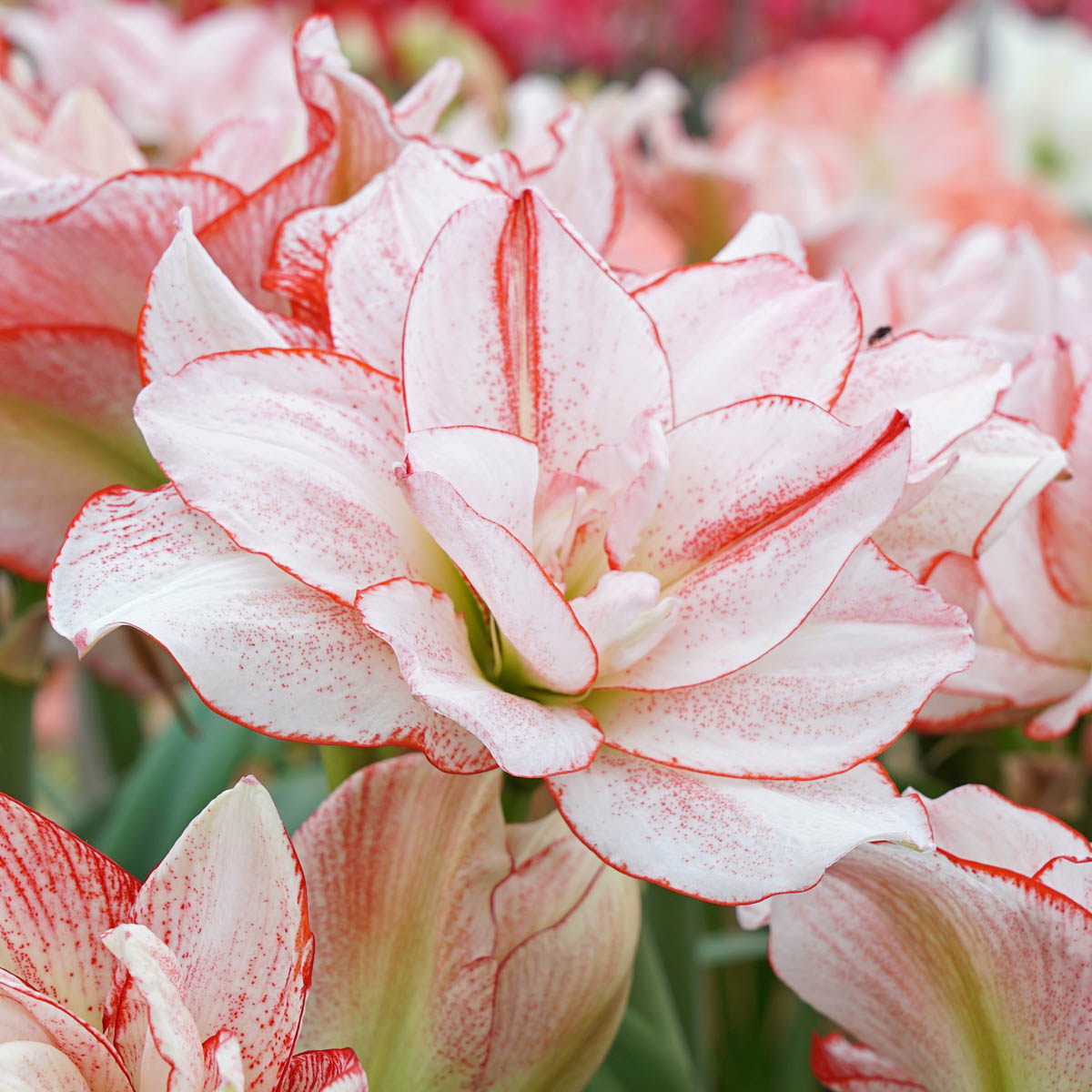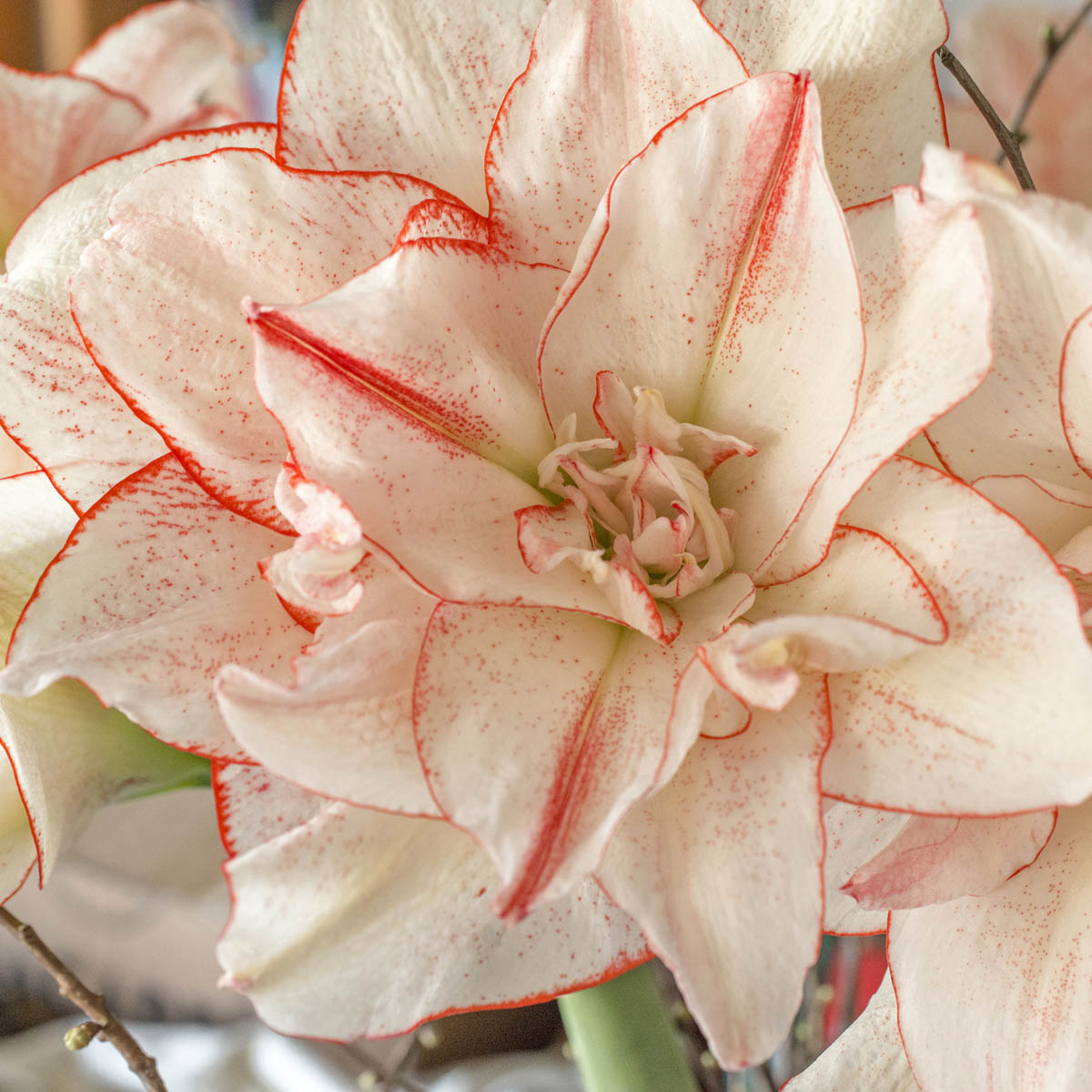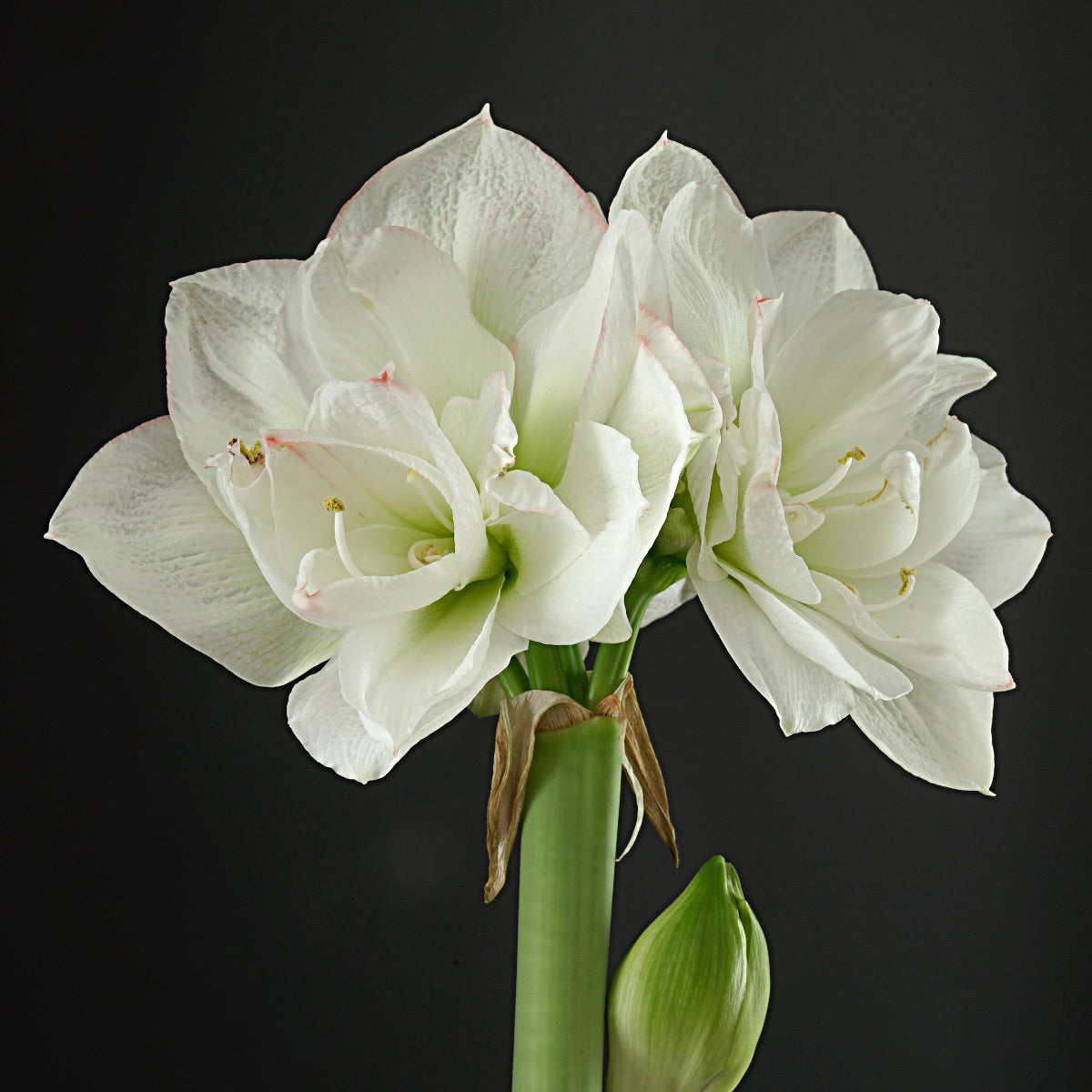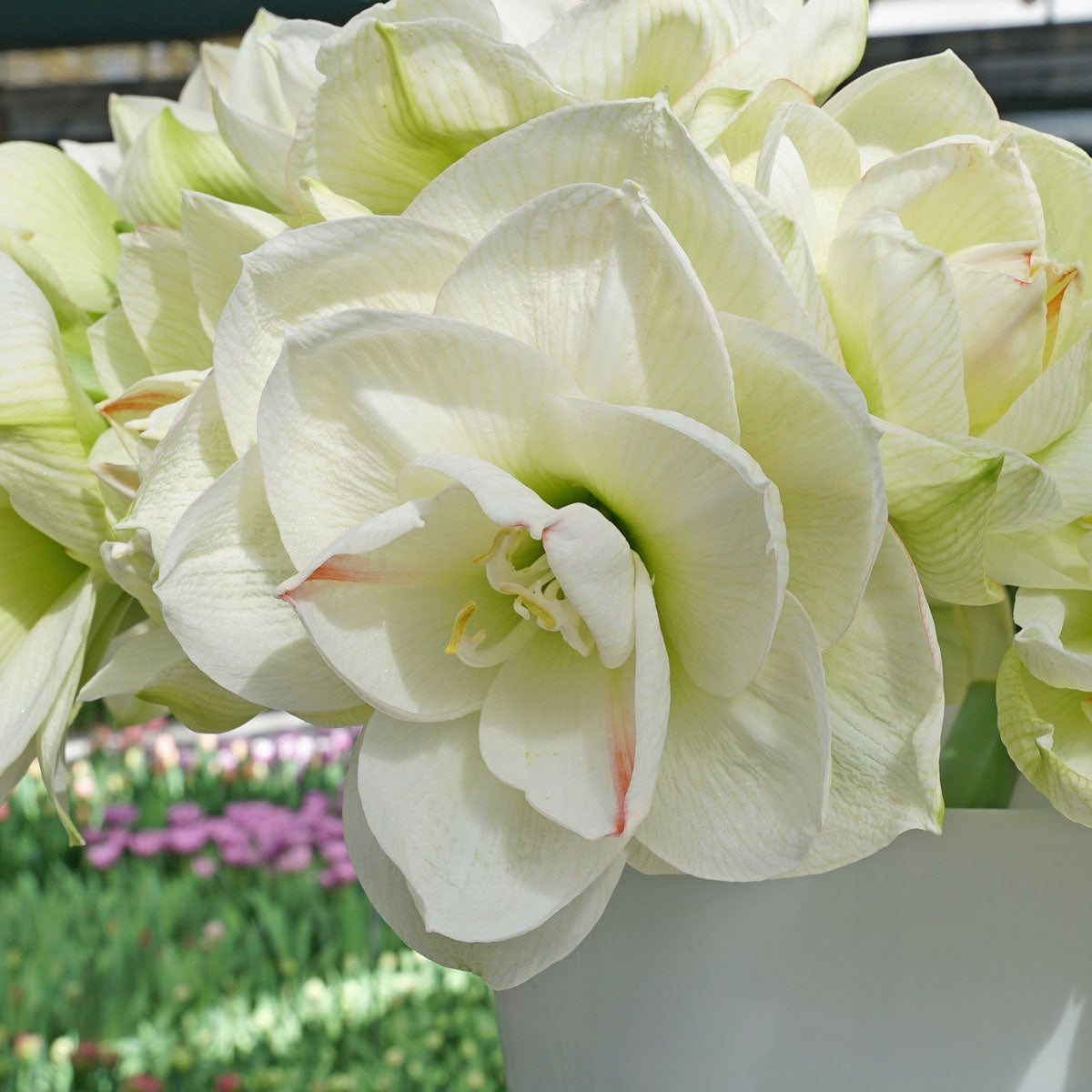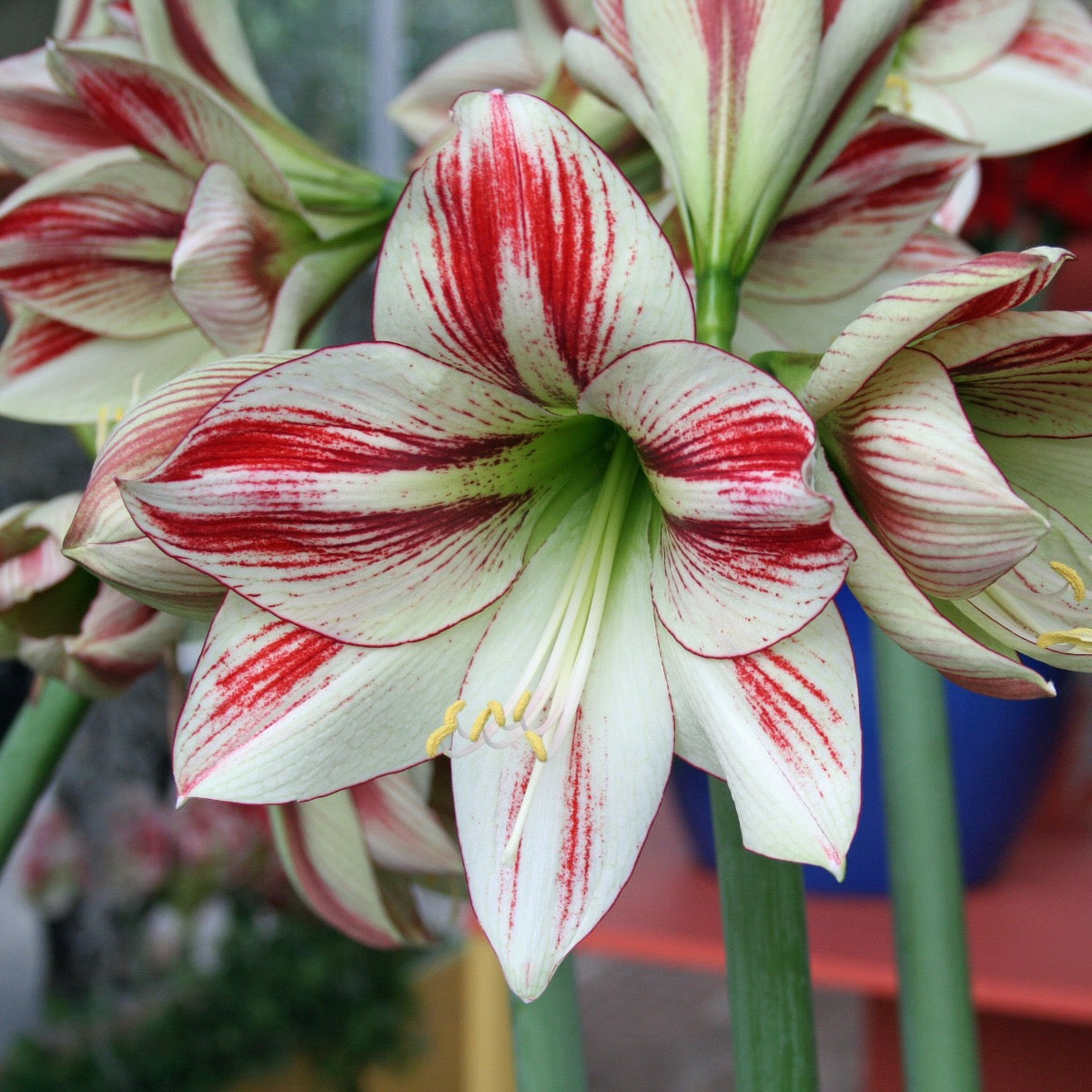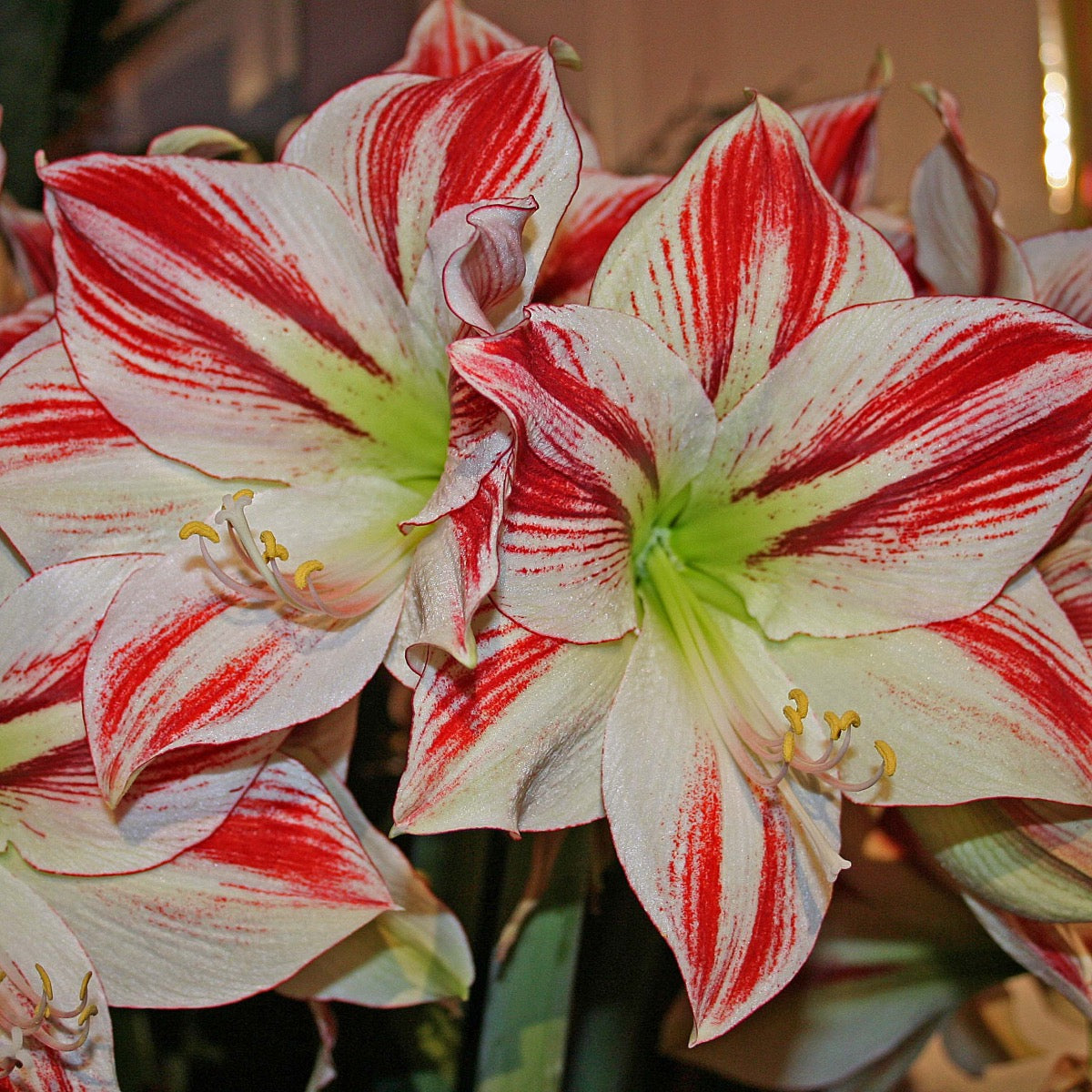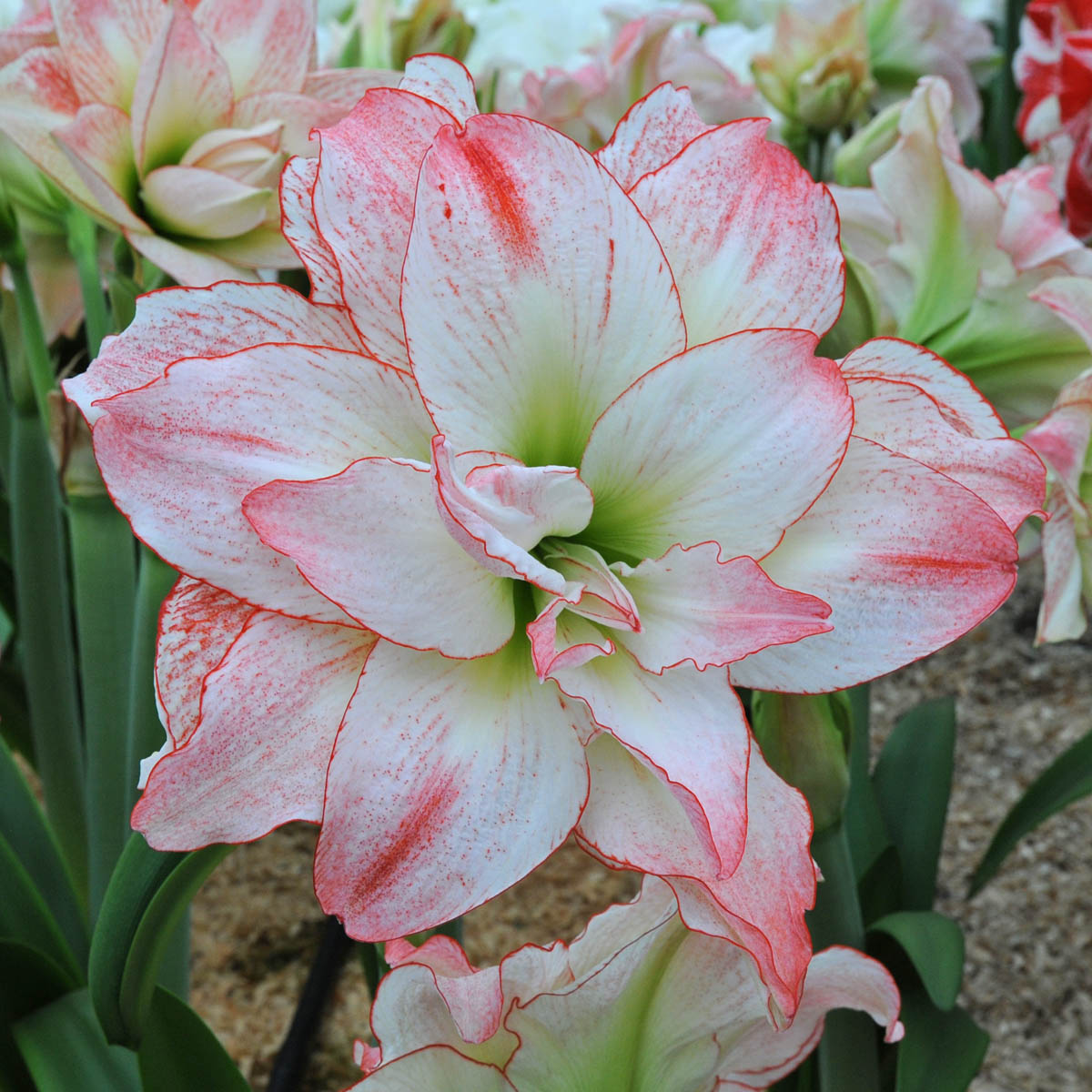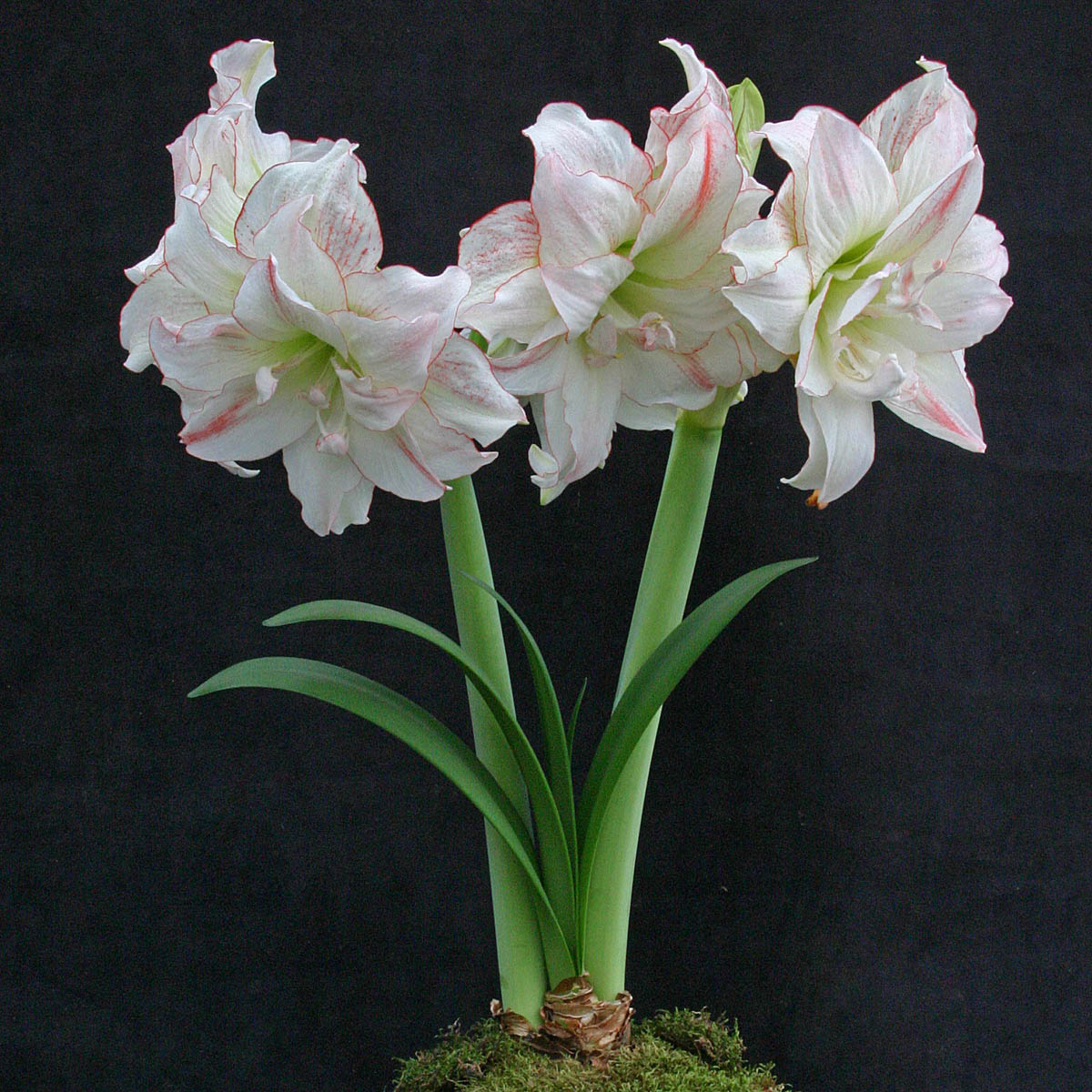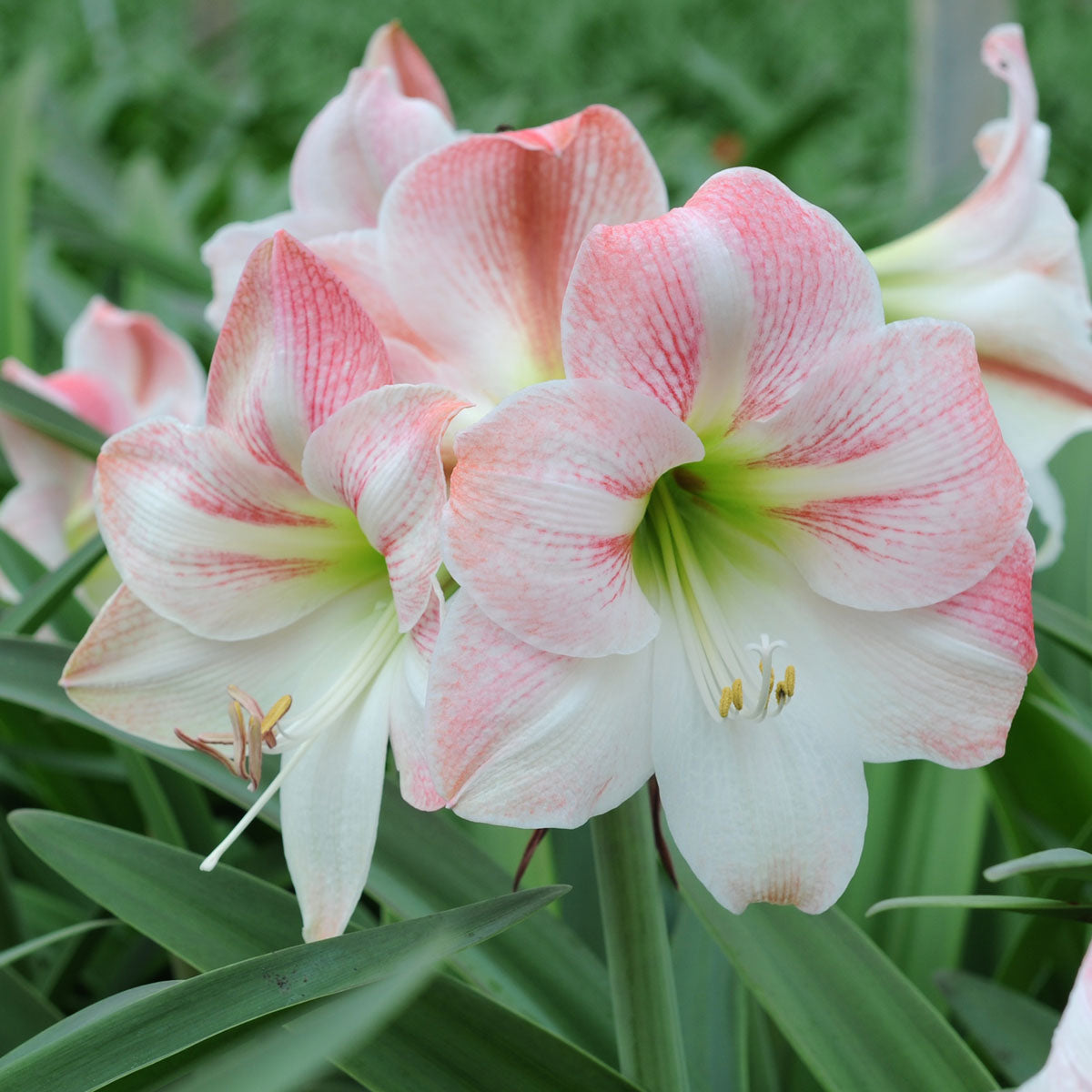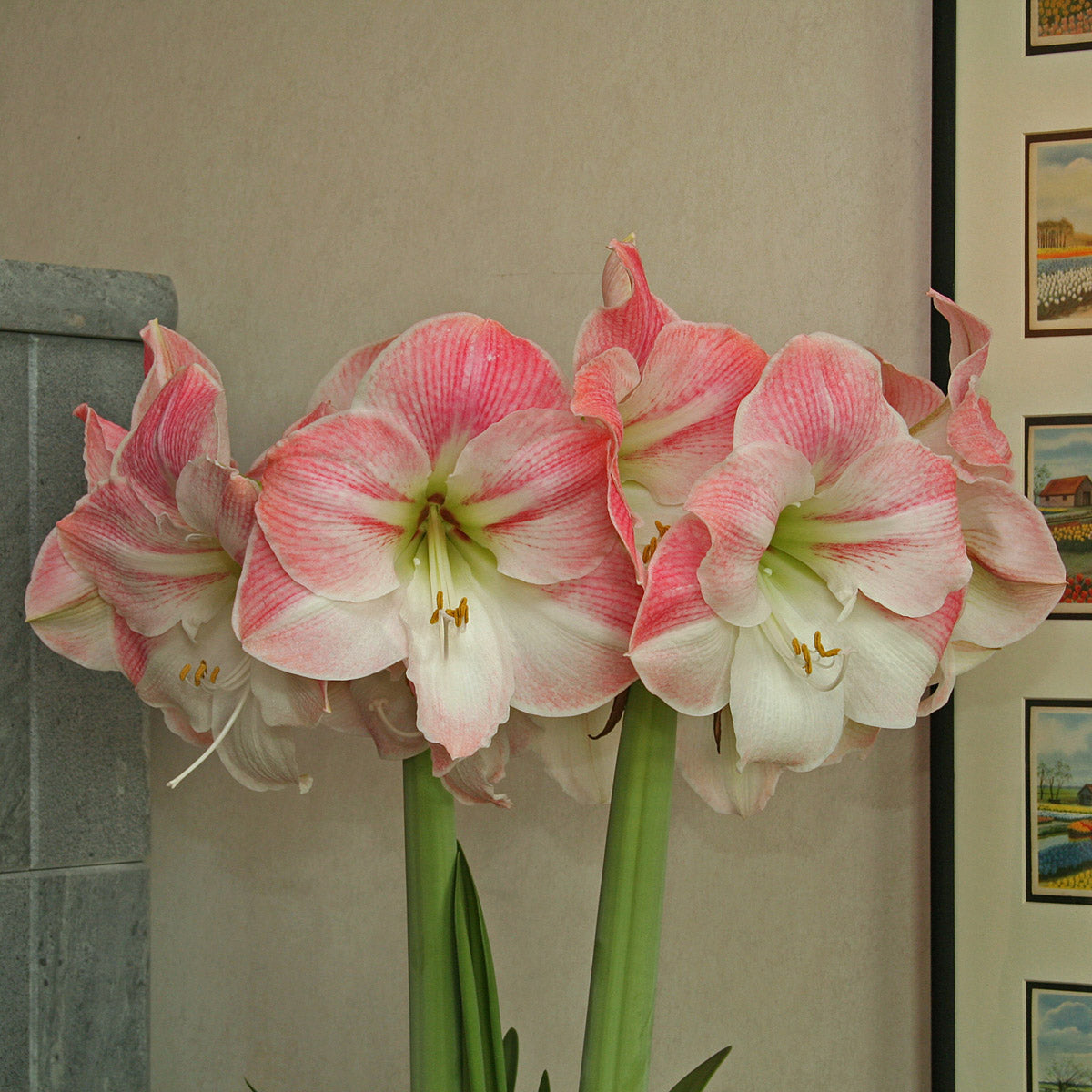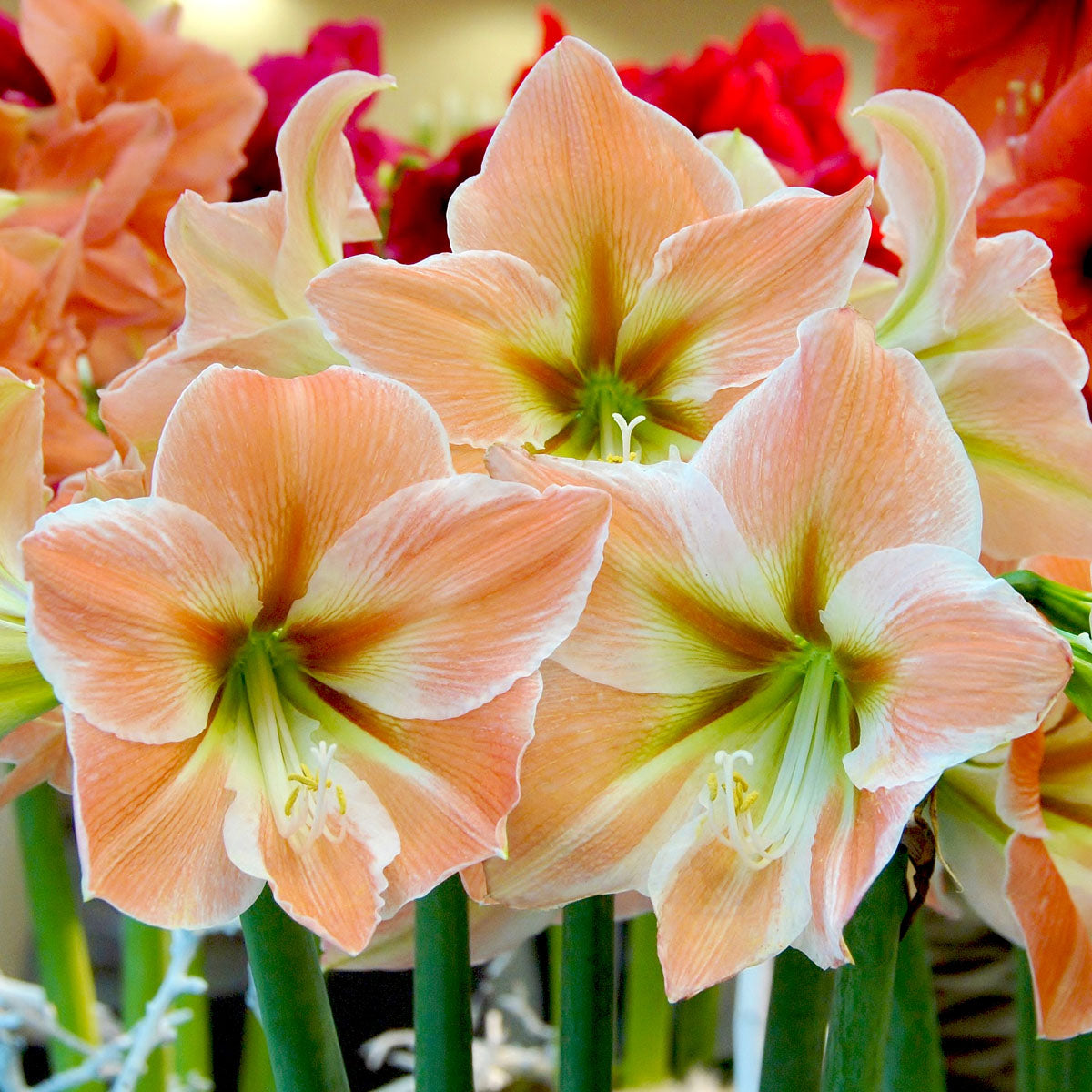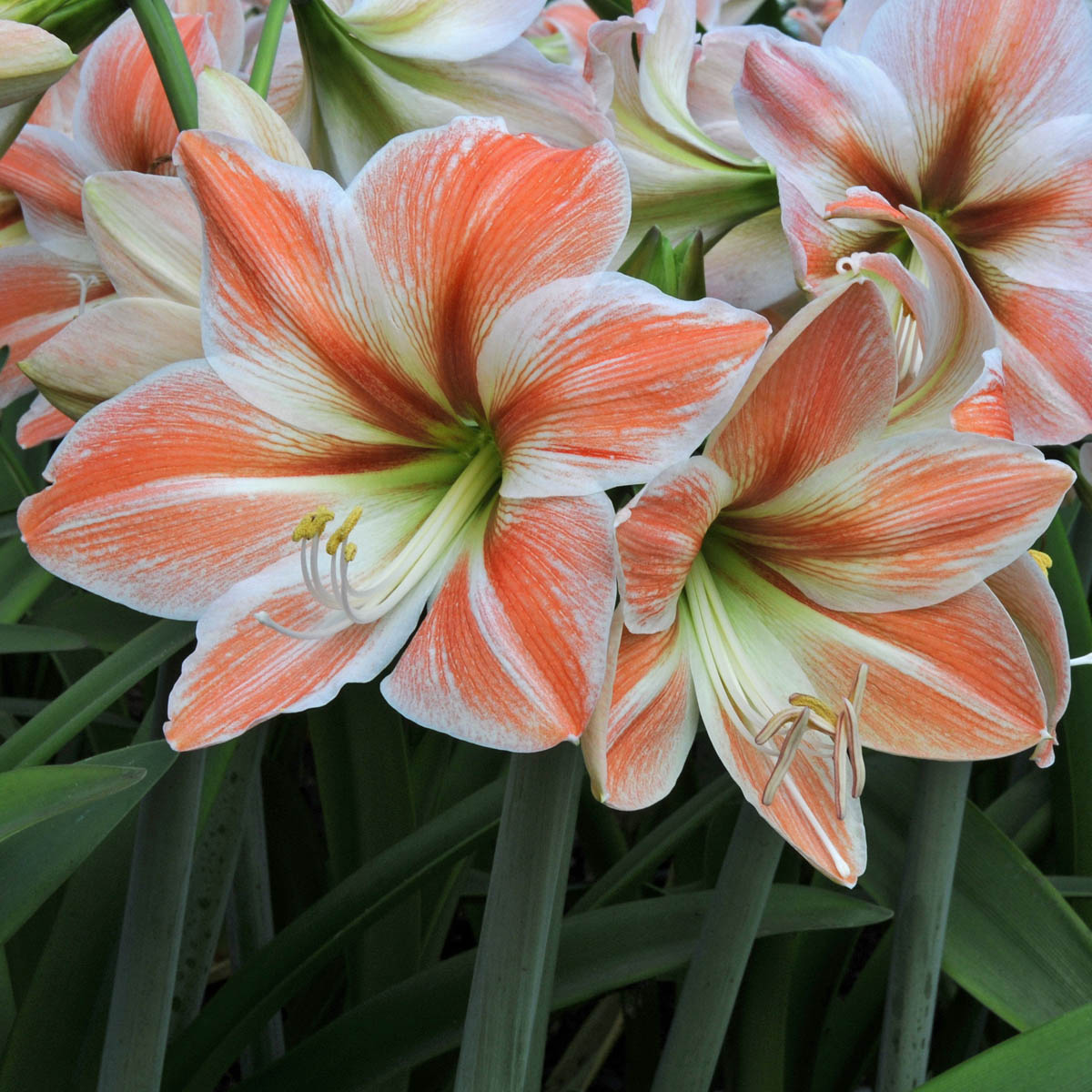The amaryllis is a plant that blooms beautifully in the winter, but after that, she finishes flowering. What do you do with your amaryllis after that? Most people throw away their amaryllis flower bulb and buy a new one during the next fall. That is always a good idea, but having your amaryllis bloom for another year is of course much more fun. It takes some dedication, but the result - having your own, loyal amaryllis rebloom during the next winter - is worth the trouble.
NB: If you want to try to get your amaryllis to bloom for another year, you need to have it planted in a pot, NOT in a vase. An amaryllis needs soil if you want her to bloom again, just water will not suffice.
Fluwel does not guarantee that getting your amaryllis to bloom for another year is going to work. We guarantee a beautiful, blooming flower in the first year, but we cannot promise anything after that. We do however appreciate your enthusiasm if you do want to try to get your amaryllis to bloom for another year, therefore we are happy to provide you with all the information you need on the matter.
What you need to know to get your Amaryllis to rebloom
An amaryllis blooms large and colourful, but after its blooming only green remains. Sometimes the leaves has only just began to sprout when the flower has already finished blooming. To learn how to get your amaryllis to bloom for another year after its first, it is useful to first know where she originally comes from.
The Original Habitat of the Amaryllis
Originally, the amaryllis comes from subtropical areas in South America. Most species Amaryllises can be found in the west of Brazil, in the north of Chile, and in Bolivia and Peru. These are subtropical areas with gentle winter temperatures, where the amaryllis blooms in spring. These areas also have a period of lower temperatures in winter, which is important for the amaryllis to initiate blooming. Like the tulip, daffodil and hyacinth, the amaryllis needs this winter resting period before she starts blooming. As I mentioned before, the winters in those areas are gentle: a temperature of around 15 degrees Celsius for a period of 8 weeks is enough to mimic the winter resting period of the amaryllis.
The Amaryllis After Blooming
So, what you need to do to get your amaryllis to bloom for another year is to put her in a place as warm as possible, with enough light, when she finishes blooming. Ideally, this would be a hobby greenhouse or a conservatory or sunroom. If these places are unavailable to you, you can also put your amaryllis in the garden, in a spot where she gets as much sun as possible. When the night temperatures begin to drop, around September or early October, you can move her back inside the house. If temperature decreases in your greenhouse, you can leave your amaryllis there.
Your amaryllis will have produced a lot of new leafs: you do not have to remove those. Like in her original habitat in South America, the amaryllis is an evergreen: she has green leafs year-round.
Now, after her growing period during summer, your amaryllis needs her winter resting period. Like the amaryllises in South America, she needs to be in a temperature of around 10 to 15 degrees Celsius for 8 weeks. Leave the green leafs on your amaryllis at all times: this is good for the plant. During this period, your amaryllis will not grow much, therefore she does not need much water. The green leafs will vaporize some water at all times, therefore you do need to keep the soil in the pot at least a little bit moist.
Getting Your Amaryllis to rebloom
After this period of rest, move the amaryllis back into a warm area, preferably 20 degrees Celsius or more. When feeling this warmth, the amaryllis bulb will assume the winter resting period is over and that spring has begun. The amaryllis will now continue growing and eventually blooming.
Even when you have done everything right, it sometimes happens that the amaryllis, despite all effort, does not bloom. This means that surroundings have not been good enough for your amaryllis to create a flower for another year. An amaryllis is not the easiest flower to get to bloom again, so sadly this can happen.
What do I do with the finished Flower?
At times, you read that it would be better to cut off the flower’s stems, but that is certainly not true. It does not necessarily harm the bulb when you do cut them off, but keep in mind that the stems also provide chloroplasts: chloroplasts provide energy through photosynthesis, which is very useful to the amaryllis bulb. Flowers that have finished blooming can be pinched off, but this is not a necessity at all. If you are lucky, the flower stem could even produce beautiful seed buds. The flower stems will die down on their own, and when they have completely withered, you can carefully remove them.

 Deutsch
Deutsch English
English Nederlands
Nederlands
